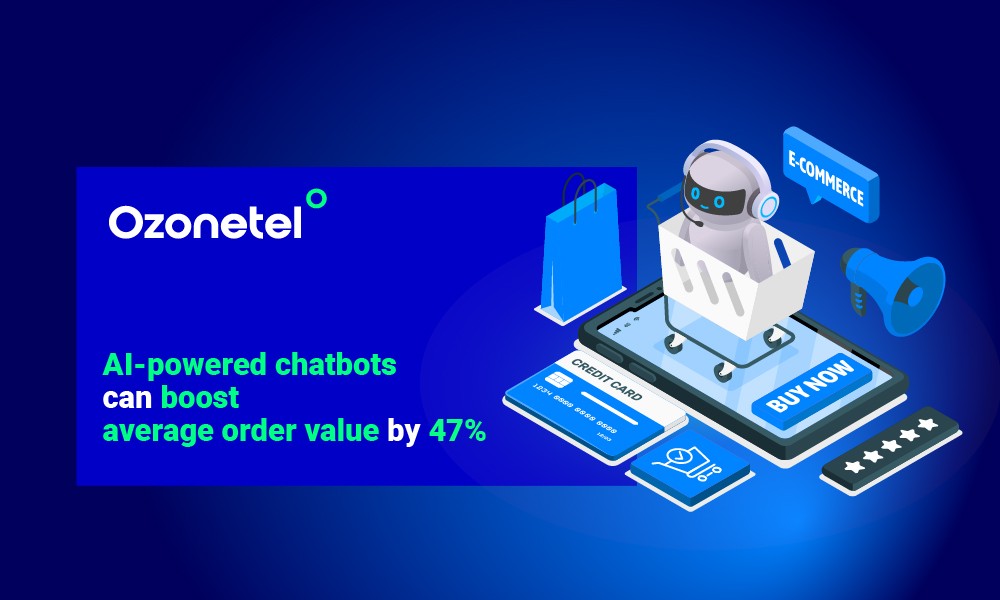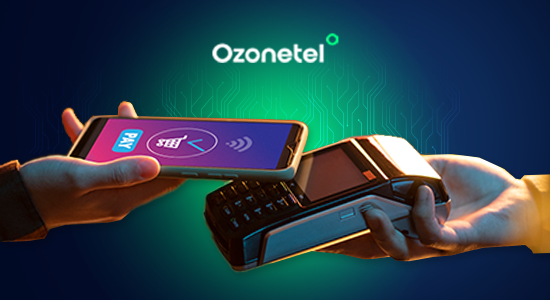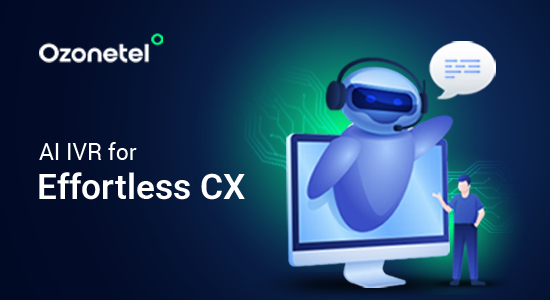- Resources
- How eCommerce Brands can Tailor Experiences to Elevate Customer Lifetime Value
How eCommerce Brands can Tailor Experiences to Elevate Customer Lifetime Value

Are abandoned carts haunting your eCommerce store?
It’s a familiar scenario in the ecommerce industry, with studies revealing more than 69% of online shopping carts are abandoned. That translates into lost sales and missed opportunities.
So how do you overcome this challenge and ensure a seamless user experience? The answer varies and includes multiple approaches. For instance, offering real-time assistance through live chat support can address customer queries instantly, while personalized recommendations based on past purchases can enhance the shopping experience. These positive interactions can increase customer loyalty by up to 73% and boost revenue by 10%-15%.
Let’s explore effective eCommerce strategies to deliver exceptional customer experiences and set your online store apart.
eCommerce Customer Journey: Key Stages and How to Optimize Them
The eCommerce customer journey is the path a customer takes from first discovering your online business to making a purchase and beyond. Having an understanding of this journey helps you optimize each touchpoint, improve customer satisfaction, and increase conversions. Also, by mapping out the eCommerce customer journey, you can identify pain points, streamline processes, and create a seamless experience that keeps customers coming back.
Now, let’s walk through the stages of the eCommerce customer journey.
Awareness
This is where your potential customer becomes aware of your brand and products. They might discover you through social media, search engines, or advertisements. It’s crucial to increase brand visibility through targeted marketing campaigns, SEO optimization, and social media presence. At this stage, your job is to make a great first impression with a fast-loading website, clear messaging, and engaging content that speaks to their interests.
Consideration
Now that they’re aware of your brand, your potential customer starts to show more interest. During the consideration phase, customers are actively researching and comparing products or services. They might read reviews, visit your website, and explore different options. Creating comprehensive product pages with clear description, specifications, features, high-quality images/videos, and testimonials can help influence their decision and persuade them to visit your app or website.
Conversion
This is the moment of truth – your customer decides to make a purchase. This stage involves optimizing your website for a smooth and user-friendly checkout process, offering competitive pricing and promotions or free shipping, providing a secure and reliable payment gateway, and ensuring proactive customer support is readily available to address any concerns.
Post-Purchase
Once the customer buys a product, it’s essential to provide efficient delivery options with real-time tracking to ensure a smooth post-purchase experience. Offering multiple delivery options and clear shipping timelines helps meet various customer needs. Additionally, delivering excellent customer service through multiple channels for any questions or returns and encouraging customers to leave reviews online can significantly improve customer experience
Retention
Retention focuses on keeping customers engaged and satisfied. Now’s your chance to turn them into repeat customers. Send a follow-up email asking for feedback, offer tips on how to get the most out of the product, and maybe suggest complementary items. Use customer reviews and feedback to improve your products and services, showcasing your responsiveness and willingness to adapt. The goal is to build a long-term relationship that encourages repeat business and reduces churn rates.
Advocacy
The customer journey doesn’t end after the purchase. By providing a positive experience throughout the entire journey, you can not only retain customers but also turn them into loyal advocates who recommend your brand to others. Encourage this behavior by creating referral programs, requesting reviews, and engaging with customers on social media. Loyal advocates can significantly expand your reach and credibility through word-of-mouth marketing.
7 Strategies to Enhance Customer Experience in eCommerce
Ever wonder how to make your online store popular? It all comes down to a stellar CX – the feeling they get from interacting with your online store.
So, here are 7 winning strategies to make your customers come back for more:
Optimizing UI for Enhanced User Experience
Creating a user-friendly, visually appealing site should be at the top of your priority list. Why? Well, for starters, 88% of online consumers are less likely to return to a website after a bad experience.
So, how can you do this? Start with your navigation menu – think of it as a roadmap for your customers. Keep it clear, organized, and easy to locate. Consider using drop-down menus for subcategories to streamline the browsing experience. But don’t forget about search functionality! A robust search bar with intelligent suggestions and misspelling corrections can be a lifesaver for customers who know exactly what they want.
Take a cue from Nike’s ecommerce platform. Their minimalist design, with ample white space and a black-and-white color palette, allows products to stand out on any device. They’ve also implemented a guest checkout option, recognizing that 23% of consumers will abandon their cart if forced to create an account.

Remember, a great user experience can lead to a 2.6x increase in customer satisfaction and a conversion rate boost of up to 400%. So, focus on creating a clean, intuitive layout with fast loading times. Also, mobile responsiveness is no longer optional – it’s a necessity. With the rising popularity of mobile shopping, your site needs to adapt seamlessly to various screen sizes and resolutions.
Personalization Strategies for Better Engagement
Personalization is crucial in ecommerce now more than ever. It’s the key to creating a seamless, engaging shopping experience that motivates customers to keep coming back. But what exactly does personalization mean in the context of online retail?
Personalization in ecommerce involves tailoring the shopping experience to individual customers based on their preferences, behaviors, and past interactions. It’s about making your customers feel valued and understood, just like they would in a physical store with attentive staff. Why does this matter? Well, 77% of consumers have chosen, recommended, or paid more for a brand that provides a personalized service or experience.
For this, you can use AI tools that allow you to analyze a customer’s browsing history, past purchases, and even similar customers’ behaviors to suggest products they’re likely to be interested in.
Take Sephora, for example. They’re upfront about customizing product recommendations for each customer, leveraging data on past purchases and browsing behavior to offer highly relevant suggestions. But Sephora doesn’t stop at product recommendations. They also personalize:
- Loyalty program offerings: Their Beauty Insider program offers personalized rewards based on your shopping habits.
- Virtual try-on experiences: Using AI and AR technology, Sephora allows you to virtually test makeup products, tailored to your skin tone and face shape.
- Customized beauty advice: Their chatbots and virtual beauty advisors offer personalized skincare and makeup tips based on your profile and concerns.

Speed and Convenience in Online Shopping
Did you know that 52% of consumers say at least half their purchases are influenced by convenience? This statistic underscores the importance of making your online store as user-friendly and efficient as possible.
Start by optimizing your website’s loading times. A one-second delay in page response can lead to a 7% reduction in conversions. Aim for pages that load within 2 seconds to keep customers engaged and reduce bounce rates. But speed isn’t just about page loads – it’s also about how quickly customers can find what they’re looking for. Implement an effective search functionality with filters, predictive text, and related items to help customers easily locate desired products.
Next, streamline your checkout process. Take inspiration from Etsy’s approach. They use a ‘pre-checkout’ shopping cart that directs shoppers to different checkout flows based on their preferred payment method. Etsy also displays a progress bar during checkout, reducing uncertainty and keeping customers informed.

Finally, provide multiple payment methods to cater to diverse customer preferences. This strategy can significantly reduce cart abandonment rates and increase impulse buying. Include options like credit cards, digital wallets, Buy Now Pay Later services, and even cryptocurrencies.
Superior Customer Support and Services
Have you considered how much impact your support team can have on customer satisfaction? By empowering your team with the right tools, training, and resources, you’re setting the stage for prompt and effective assistance that can turn a simple interaction into a positive post-purchase experience.
One key strategy is implementing live chat on your website. Did you know that live chat has surpassed email as the most popular digital contact option, with 30% of customers preferring it to connect with support agents? It’s not hard to see why.
Live chat offers real-time communication, facilitating quick query resolution and immediate feedback. Plus, it’s convenient for customers, reducing their effort and improving overall experience. Satisfied customers are more likely to shop with you again after a smooth, efficient support experience!
You can also consider incorporating chatbots and self-service options into your support strategy. Chatbots can handle common queries automatically, freeing up your human agents for more complex issues. As for self-service, a whopping 91% of consumers say they would use a knowledge base if it were available.
By offering comprehensive FAQs, wikis, or a searchable knowledge base, you’re catering to customers who prefer finding answers independently. This not only improves customer satisfaction but also reduces the load on your support team.
For inspiration, look at how luxury brand Louis Vuitton has leveraged chatbot technology. Their LV Virtual Advisor chatbot on Facebook Messenger uses AI to provide a conversational, personalized experience. It helps users navigate products, shares information about brand history and craftsmanship, and even allows users to share favorite products with friends.

Time-bound Feedback and Reviews
Did you know that customer reviews are trusted 12 times more than marketing materials from an organization? That’s why it’s crucial to encourage and showcase authentic customer voices.
Implement a strategy to gather feedback consistently through surveys, reviews, and direct communication. This proactive approach allows you to identify areas for improvement and take swift action to enhance the customer experience.
But don’t stop at just collecting feedback – make sure to display it prominently. According to a PowerReviews study, 86% of consumers consider reviews essential when making purchase decisions. By showcasing reviews on your product pages, you are not only building trust but also providing valuable information that can influence purchasing decisions and reduce reliance on your customer service team.
Remember, user-generated content is a powerful tool for social proof and can even boost your SEO efforts. Consider the impact of George Clooney’s endorsement for Nespresso – it significantly increased brand recognition and buying intent.

And if celebrity endorsements seem out of reach, you can leverage the power of your satisfied customers’ words. Why not encourage customers to share photos or videos of their purchases? This authentic content can resonate with potential buyers and differentiate your brand from competitors.
Loyalty Programs for Retention & Growth
Why focus on loyalty? Consider this: just 8% of loyal customers can generate a whopping 41% of an ecommerce store’s revenue. That is a powerful incentive to invest in customer retention strategies. But how do you create a loyalty program that truly resonates with your customers?
Take a page from Walmart’s playbook. Their Walmart+ program offers a mix of tangible benefits like free delivery, gas discounts, and early access to promotions. By providing clear value, they have created a compelling reason for customers to stay loyal.

Moreover, when designing your loyalty program, think beyond simple point accumulation – think of a tiered reward system. This approach, which you can implement using tools like Smile.io or Yotpo, allows customers to earn various levels of rewards based on their engagement and purchases.
You could also offer exclusive benefits to loyalty program members, such as early access to sales or special products. Remember, personalization is key. So, tailor rewards based on customer preferences and past purchases to enhance that personal connection.
To retain these customers, you can also encourage them to write reviews or engage on social media in exchange for loyalty points. This approach not only boosts engagement but also helps create a community around your brand. And the results can be significant – according to Accenture, a well-executed loyalty program can increase a brand’s market share by 20% and improve customer profitability by 15%.
Ensuring Data Security and Privacy
We do not even have to emphasize the importance of data security enough, considering that the eCommerce industry experiences about 32.4% of all cyber-attacks. So, how do you ensure your customers feel safe while shopping on your site?
Start by implementing multi-layer security measures – use a Content Delivery Network (CDN) to block malicious traffic and consider adding Multi-Factor Authentication. While it is not foolproof, it adds an extra layer of protection that makes it harder for fraudsters to access user accounts.
Do not forget about SSL certificates – they encrypt sensitive data shared across the internet, ensuring that information reaches only the intended recipient. Have you noticed the padlock icon in your browser’s address bar when shopping online? That is an SSL certificate at work, giving customers peace of mind during transactions.
Moreover, clearly communicate your privacy policies and compliance with regulations like GDPR. Explain how you collect, use, and store customer data. Remember, 83% of consumers are willing to share their data to receive a personalized experience – but they want to know it is handled responsibly.
Take a lesson from the Adidas data breach in 2018, where customer contact information was exposed which negatively impacted trust in the brand. By being upfront about your data practices, you can avoid similar pitfalls and build stronger relationships with your customers.
Efficient of Handling Returns and Exchanges
Are you aware that one in five online purchases will be sent back? That is why handling returns and exchanges effectively is crucial for boosting customer experience in your ecommerce business. While 75% of retailers view returns as unavoidable, it is time to shift that perspective. A seamless returns process can strengthen customer loyalty, increase repeat purchases, and drive extra revenue.
So, how can you create a returns process that delights customers while maintaining operational efficiency? Consider implementing a digital returns system. This approach streamlines the process, making it more efficient for both you and your customers. It offers flexibility, allowing customers to choose between mailing back items, scheduling a home pickup, or returning to in-store. Plus, it provides valuable data on return trends, helping you improve your products and processes.
For example, Gymshark clearly outlines country-specific return policies on their website, addressing potential variations in shipping costs and procedures. This transparency builds trust and sets clear expectations. Remember, 64.2% of customers return products because they don’t match the description. So, ensure your product images and descriptions are accurate to reduce unnecessary returns.
 s
s
Leveraging Emerging Technologies in E-commerce
As the ecommerce landscape evolves, new technologies are reshaping how customers interact with online stores. Let’s explore some of the most impactful innovations enhancing the customer experience:
Chatbots
Chatbots have become an essential tool for providing round-the-clock customer service. These AI-powered assistants can understand and respond to customer queries in a conversational manner, reducing response times and improving satisfaction.
Did you know that 70% of millennials report positive experiences with chatbots? They appreciate the immediate satisfaction and convenience these digital helpers provide.
AR and VR
AR and VR technologies are revolutionizing how customers interact with products online. These immersive technologies allow you to visualize products in 3D, virtually try on clothes, or see how furniture would look in your home. By providing a more tangible shopping experience, AR and VR not only enhance customer satisfaction but also reduce the likelihood of returns. Have you ever hesitated to buy furniture online because you weren’t sure how it would fit in your space? With AR, that concern becomes a thing of the past.
Voice Commerce
As more people become comfortable with voice-activated devices like Amazon Echo, voice search is becoming increasingly prevalent in ecommerce. Nearly one-third of internet users have used voice search to shop or gather product information. To succeed in this space, you need to implement a robust SEO strategy, create informative voice skills and actions, and include product-feature and review videos. By optimizing for voice search, you’re not just keeping up with trends – you’re making your products more accessible to a growing segment of shoppers.
IoT and Blockchain
IoT allows businesses to collect data from interconnected devices, enabling better customer engagement and more personalized experiences. You can use IoT to send targeted offers, discounts, and reminders based on real-time customer behavior.
Blockchain, on the other hand, is enhancing transaction security and transparency. By using blockchain-based platforms, you can reduce the risk of fraud, increase customer trust, and simplify cross-border transactions.
Gamification
Who says online shopping can’t be fun? Gamification injects an element of play into the ecommerce experience, motivating customers to engage more deeply with your brand. You can implement promotional contests, spin-to-win opportunities, or tiered VIP loyalty programs.
These techniques not only make shopping more enjoyable but also encourage repeat visits and purchases. Have you ever found yourself eager to make another purchase just to reach the next tier in a loyalty program? That’s gamification at work.
Customer Data Platforms
Customer Data Platforms (CDPs) allow you to gather, store, analyze, and act on real-time customer information from various sources. With a CDP, you can build comprehensive customer profiles, predict behavior, segment your audience, and deliver truly personalized experiences. The best part? All this valuable information is centralized, making it easier for your sales, customer service, and marketing teams to access and utilize.
How Ozonetel Empowers Leading eCommerce Firms to Drive Exceptional CX
Discover how Ozonetel’s unified CX platform helps eCommerce leaders streamline operations and enhance customer experience.
Wakefit: Streamlining Operations and Enhancing Customer Experience
eCommerce firm Wakefit aimed to improve operational workflow, empower executives with contextual information, and minimize reliance on other departments to reduce customer response time and optimize sales opportunities. They also sought to capture the voice of customers effectively, minimize delivery failures, and address product usage-related queries through cross-channel awareness campaigns.
With the Ozonetel CX platform, Wakefit streamlined operations and addressed repeat queries with a Priority IVR, optimizing executive bandwidth and improving overall efficiency. This led to notable outcomes including a 400% higher FCR rate, 5% lower return rates, and 25% reduced operational costs.
How BigBasket Improved Sales and Customer Loyalty with Gen-AI-Powered Solutions
BigBasket wanted to analyze the conversations their CX team were having with their customers to find out about their complaints and the reason for complaints so that they could course-correct in real-time. Ozonetel understood the context and suggested leveraging their Gen-AI powered voice-of-the-customer solution. This enabled BigBasket to:
- Identify frequent issues & key areas of concern for their customers
- Analyze sales scripts and identify customer objections that impact sales
- Automate entry of conversation summary in CRM and CX tool
- Improve CX with faster & better resolution of complaints.
The solution helped BigBasket understand the underlying cause of customer complaints which included leakage in dairy products, delays in delivery, and missed deliveries. These issues were addressed and led to a 5% improvement in sales, 1.5X improvement in order value, and 20% improvement in repeat orders.
Optimizing Delivery Operations: Blinkit’s Approach to Effective Communication
Blinkit wanted to communicate offers to delivery executives according to geography. They also aimed to keep delivery executives equipped with the new updates and encourage them to increase delivery counts per day while analyzing campaign effectiveness.
With Ozonetel, Blinkit delivery executives received instant notifications about new promotions, rewards, and updates from Blinkit’s verified WhatsApp account. The Blinkit team managed these offers through Ozonetel’s frontend admin panel, enabling campaign creation and geography-wise promotions. Our solution also helped them gain a real-time view of delivery, engagement, and disengagement, ensuring timely updates and effective campaign management. This media-agnostic communication ensured higher attention and engagement rate
Conclusion
Remember, in the digital marketplace, your competition is just a click away. By prioritizing customer experience in every aspect of your operations, you’re not just selling products—you’re building relationships, fostering loyalty, and setting your brand apart. The strategies we’ve explored are your toolkit for success – from personalization to seamless returns, secure transactions to emerging technologies, every touchpoint in the customer journey presents an opportunity to delight and retain your customers.
Want to see what Ozonetel can do for your company? Sign up today for a free 7-day trial.
Prashanth Kancherla
Chief Operating Officer, Ozonetel Communications
Over the past decade, Prashanth has worked with 3000+ customer experience and contact center leaders...
Chief Operating Officer, Ozonetel Communications
Over the past decade, Prashanth has worked with 3000+ customer experience and contact center leaders to comprehensively understand the need for effective and efficient customer communications at every step of their journey with a brand. Deeply embedded in today’s CCaaS ecosystem, he has been instrumental in Ozonetel's growth and contributed in various roles including product management, sales, and solution architecture.







